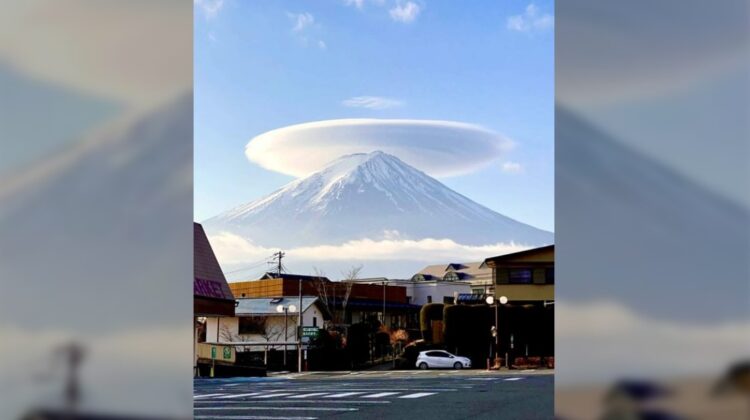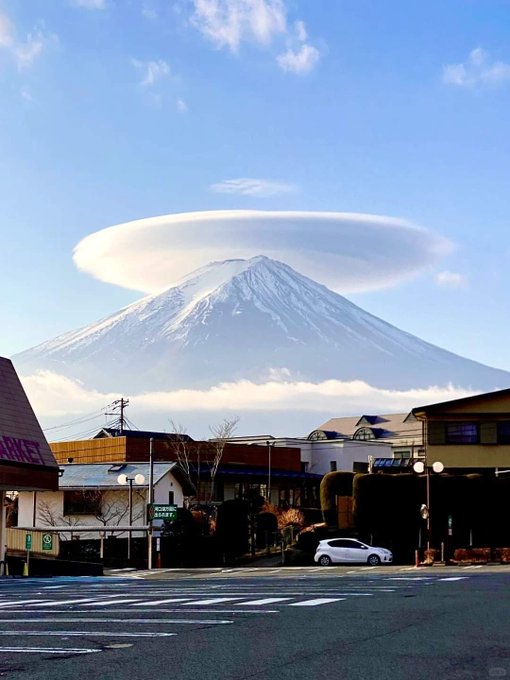
A breathtaking sight graced the skies above Japan—a majestic lenticular cloud hovering over the iconic silhouette of Mount Fuji. Lenticular clouds, a rare meteorological marvel, form when air currents dance over mountainous terrain, sculpting the atmosphere into undulating waves.
Mount Fuji, Japan’s highest peak at 3,776 meters (12,389 feet), stands as a timeless symbol of natural grandeur and cultural reverence. Despite its status as an active volcano, its last eruption dates back to 1707, leaving behind a legacy of awe-inspiring beauty.

This sacred mountain, forged by the tumultuous forces of nature over millions of years, comprises three distinct parts: Komitake, the ancient base; Ko Fuji, the sprawling midsection; and Shin Fuji, the majestic summit crowned by its iconic symmetrical cone.
For countless generations, Mount Fuji has beckoned pilgrims and adventurers alike, its towering presence serving as both a spiritual beacon and a formidable challenge. Each year, throngs of climbers undertake the arduous ascent, drawn by the promise of self-discovery and the chance to commune with nature at its most sublime.
As the lenticular cloud gracefully graces the heavens above Mount Fuji, it serves as a poignant reminder of the mountain’s enduring allure and the profound connection between earth and sky. In its ethereal embrace, we find inspiration, solace, and a timeless reminder of nature’s boundless majesty.

Leave a Reply